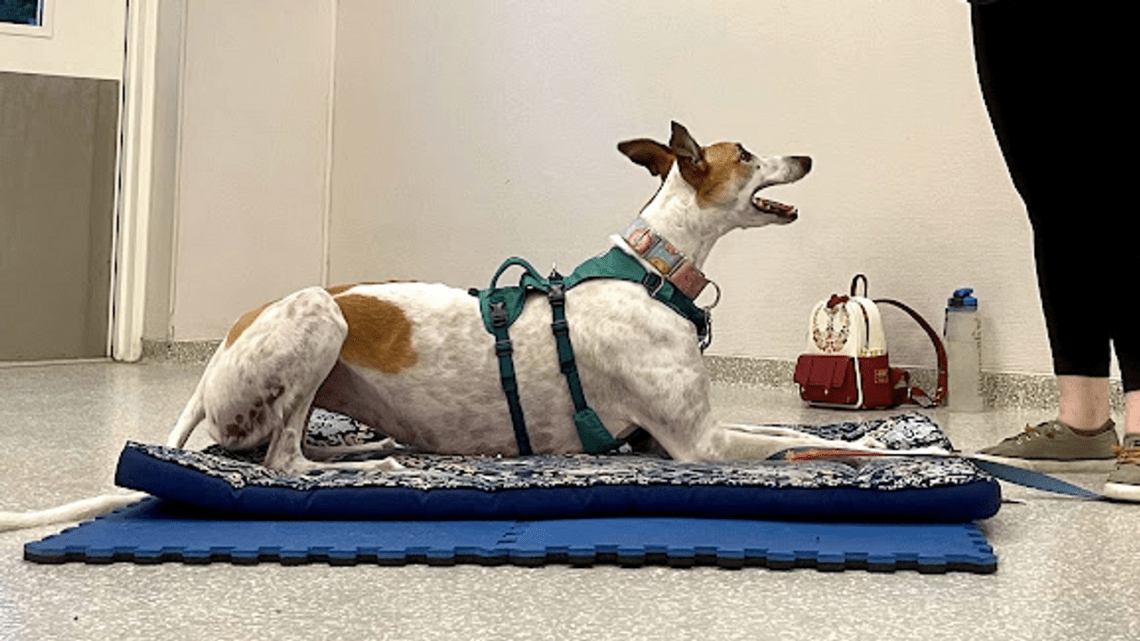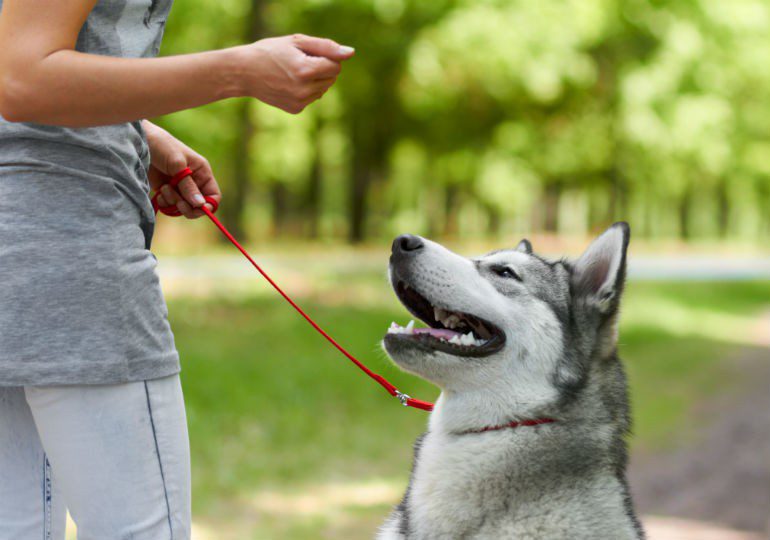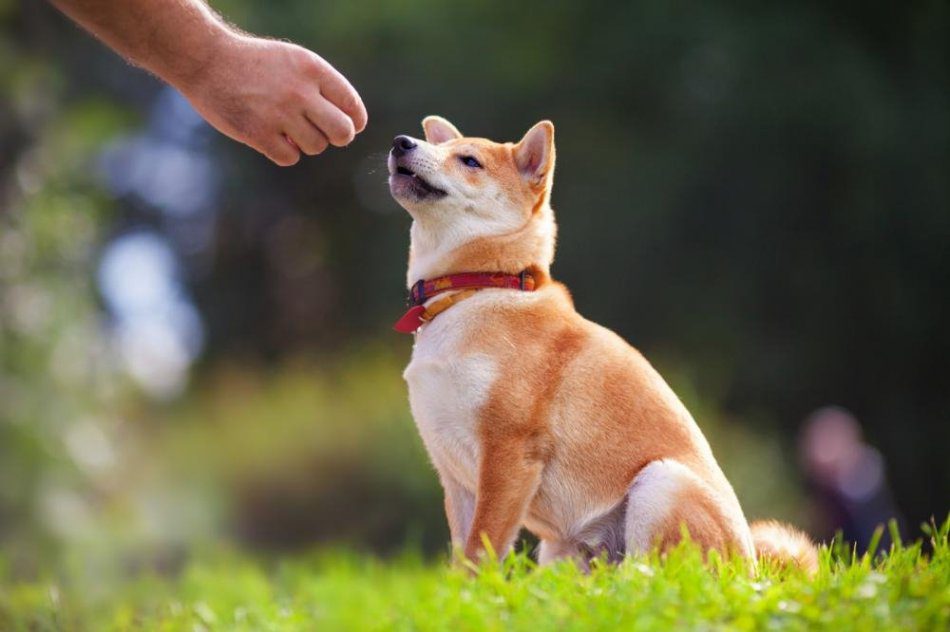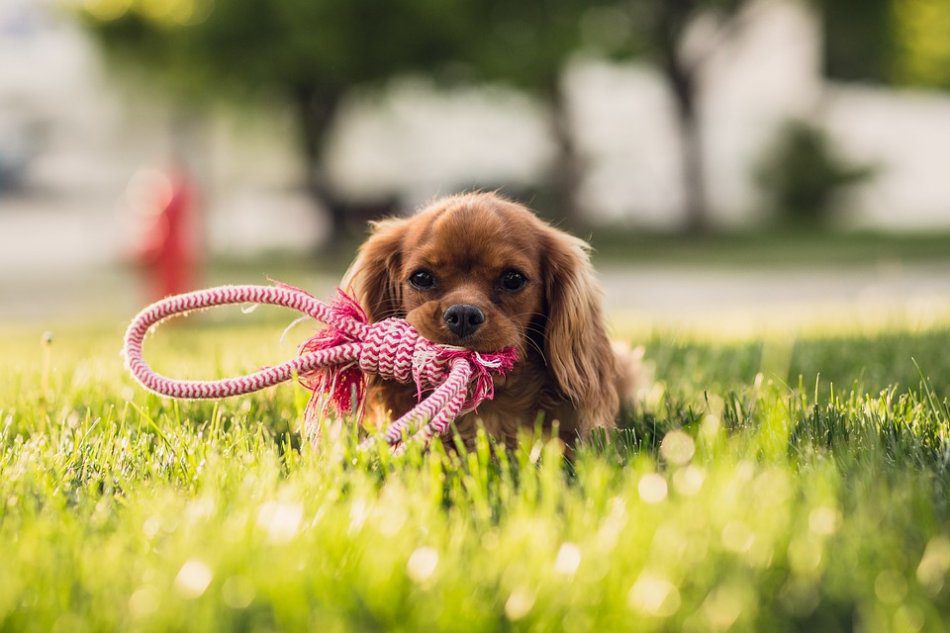
Teaching methods. Shaping for dogs
Shaping as a dog training method gaining more and more popularity in the world.

Contents
Features of shaping for dogs
Within the framework of the operant method of teaching, there are several approaches to work:
- Guidance – when we, with the help of a piece held in our hand, tell the dog what needs to be done. An additional bonus will be the dog’s focus on the owner and on his hand, which helps a lot later in life. But at the same time, we do not touch the dog. For example, if we put a treat on the dog’s head, it will almost certainly raise its head and sit down – this is how the “Sit” command is taught.
- Catching, or “Magnet” – when we reward the behavior that the dog exhibits by nature. For example, every time a dog sits by accident, we can reward it. It will take longer and I would not use this method when teaching domestic obedience. But, at the same time, my dog, with the help of a “magnet”, learned to click his teeth on the command “Crocodile!”. With the help of catching, it is quite easy to teach the dog the “Voice” command.
- Social Learning Methodalso known as the method “Do like me”. The method is based on the fact that dogs have the ability to imitate actions. We train the dog to follow the actions of the trainer and then repeat them.
- Shaping – when using the “hot-cold” method, we teach the dog to guess what the owner is up to. Shaping is a process where we teach a dog a new action by rewarding each step in the process.
There are 2 directions in shaping for dogs:
- We come up with a problem for the dog and guide the dog so that it solves this problem. For example, I want the dog to walk up to an inverted basin and place its paws on it. I praise the dog for looking at the basin, for the first step towards the basin, for the second step, for the fact that the dog approached him. I can praise for the fact that the dog looked at the basin, poked its nose into it, raised its paw near the basin, etc.
- We ask the dog to suggest any action. Like, we didn’t come up with anything, so try it yourself – come up with a hundred thousand different ways to earn a treat. As a rule, this kind of shaping is very exciting for the dog, but sometimes they come up with amazing things. For example, my Elbrus in one of these sessions began to offer a stand on two one-sided paws, i.e. pulled up two left and stood on two right. And now, with the help of shaping, we hone the ability to blow out candles.
It’s great if you start shaping with a puppy – usually kids very quickly grasp what is required of them. Adult dogs, especially those that came after mechanics, often get lost at first, waiting for clues from their owners. Remember we talked about “learned helplessness” above? Shaping helps to fight it. At first, for most dogs, shaping is a rather difficult exercise. But as soon as they understand the rules, they fall in love with these “guessing games” and, having heard a command indicating that now they will think on their own and offer something, they are extremely happy. Moreover, after 10-15 minutes of shaping, the dog becomes mentally tired so that then he stomps to sleep, and this is sometimes very helpful to us, people.
 When teaching a dog the shaping method, it also learns to offer new fun tricks.
When teaching a dog the shaping method, it also learns to offer new fun tricks.
In what cases is shaping for dogs “prescribed”?
Shaping exercises have a great effect on the dog’s self-esteem, they are prescribed for all timid and fearful dogs, as well as dogs with learned helplessness. Shaping exercises teach dogs to deal with frustration and overexcitation. Often, when you first start shaping a dog, he tries several times to guess what you want, and if he fails to find the right answer, he starts to get very worried or tries to quit. But with the right timing of rewards and with the right tasks, the dog is drawn into the process, begins to take the initiative, sort out various behavioral scenarios. Very quickly, she realizes that she can “sell” various actions to the owner, which means she is able to lead this world.
I do a lot of face-to-face and skype consultations all over the world, and in almost every case of behavior correction, whether it is zoo-aggression, aggression towards a person, various types of fears and phobias, uncleanliness or separation anxiety, I recommend shaping exercises.
I give homework: 2 weeks of daily classes. Then you can do 2 sessions a week. But in order to disperse the dog, to explain to him that shaping is very cool, I recommend doing it every day for two weeks.
 In order for the dog to appreciate the benefits of shaping, the first 2 weeks must be practiced daily.
In order for the dog to appreciate the benefits of shaping, the first 2 weeks must be practiced daily.
Basic rules of shaping for dogs
- Change tasks every day. For example, what can a dog do on shaping? The initial set of actions is very limited: poking with the nose, taking something in the mouth, the direction of movement, the movement of the paws. The rest is options for previous actions. I recommend every day to change directions and what the dog will work with. For example, if today we poke nose to hand (nose work in a horizontal plane), tomorrow the dog will begin to offer the same thing again (dogs tend to offer either their favorite action, or the action that was “expensive” bought the day before). So, tomorrow we will ask her to work with her mouth or work with her paws in a vertical plane, for example, put her paws on a stool. That is, daily change directions and accents.
- The shaping session lasts no more than 15 minutes, we start literally from 5 minutes.
- We encourage, especially at first VERY often – up to 25 – 30 rewards per minute. With advanced dogs that know how not to be demotivated when looking for solutions, we significantly reduce the number of pieces.
- In shaping training, we do not use any markers of misbehavior such as “No” or “Ai-yay-yay”.
- I really like to introduce work markers: a marker to start the shaping session, so that the dog clearly understands that now he is starting to create, offer (I usually have a “Think” marker), a marker to end the session, a marker to indicate “you are on the right track, continue”, the “suggest something else” marker and, of course, the correct action marker.
 With the help of shaping a dog can be taught anything!
With the help of shaping a dog can be taught anything!
What are the benefits of shaping for dogs?
If we are talking about shaping as a game and pampering, this is a technique that teaches a dog to think a little differently, to actively offer himself and his actions. If shaping is part of a rehabilitation program, it is good because it helps to correct not the symptoms of problematic behavior, but its cause. For example, if we are talking about aggression towards the owner, most likely, there are contact violations in the dog-owner tandem. The pet may snarl when you try to comb it or cut its claws. Yes, it can be unpleasant for the dog, but, most likely, in the depths lies the problem of some distrust of the owner. Shaping exercises are very helpful in establishing contact with the owner. After all, this is a fun game, and even if the dog fails to find the right solution, the owner laughs. The dog sees that no matter what he does, the owner is still happy, feeds his four-legged friend and rejoices in his actions. In addition, at the beginning of training, the dog is encouraged up to 20 times per minute. That is, the owner becomes such a machine for issuing treats. Let it be mercantile at first, but we don’t care: we develop contact with the owner and the motivation for him to like, that is, to try for his person. We can just play shaping, or we can teach the dog to give paws by shaping so that the owner cuts his claws. If you pounce on a dog like a raven, fix it and hold it by force, the dog sees you as a rapist and almost Karabas Barabas. And if the dog learns on its own: “If I press my paw on your palm, will it work? Ooooh great, I found another treat button on the owner’s body!” — is a completely different matter. Then we begin to encourage independent long-term holding of the paw in the owner’s palm, and so on.
 Shaping is perceived by the dog as entertainment.
Shaping is perceived by the dog as entertainment.
If we are talking about aggression towards relatives, then according to statistics, 95% of zoo-aggression is an aggression of fear. It is of two types:
- I want to leave, but they won’t let me in, which means I will fight.
- I want you to leave, but you don’t leave, so I will fight.
Shaping develops self-confidence, patience and the ability to deal with frustration. That is, as a side effect, we get a calmer dog, while focused on the owner, and in this case, any further correction methods will give a faster result, because the dog is used to being liked by the owner and is sensitive to his wishes and requirements. If we are talking about separation anxiety, then the dog, again, is not very self-confident, anxious, with a mobile nervous system, has problems with frustration, does not know how to withstand conflict situations, etc. Shaping helps to one degree or another to stabilize almost all of these problems.
As I mentioned above, the great advantage of shaping is that it works not on the symptom, but on the cause. After all, if we are trying to drown out the symptoms, but we do not eradicate the cause, then, most likely, the cause will give birth to other symptoms.
For example, if a dog destroys an apartment, and we forbid it to do this by putting it in a cage, the reason is not eliminated. If the dog is just bored, he will start digging and tearing his bedding. If the dog has a more complex problem – separation anxiety, we may encounter the fact that, being in an anxious state and not being able to act according to an already established scenario, the pet begins to lick its paws to ulcers, gnaw its tail until it is completely bitten off, etc. n. If the dog destroys the apartment because it is anxious and uncomfortable, the cage will remove the symptom – the apartment will not be destroyed, but the problem will remain. If we are regularly tormented by migraines, we can drink painkillers to stop the attacks, but it would be more logical and correct to find the cause that causes these migraines and eliminate it. In addition to all the above benefits of shaping, the dog gets tremendous pleasure from the mental load. This is not magical a pill that can do anything, but shaping is both a very enjoyable time with your pet and an important method in the package when dealing with certain types of problem behavior.





